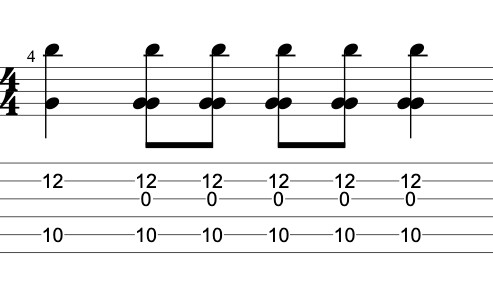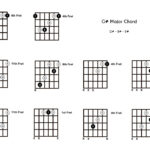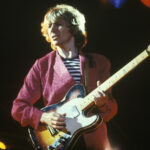fingerstyle
“Blackbird” stands as a testament to songwriting brilliance, a timeless piece that resonates with guitarists and music lovers alike. Many online guitar lessons, however, unnecessarily complicate learning this beautiful song. Imagine spending 14 years trying to master a song, only to discover a simpler, more effective approach that unlocks it in just two days! That’s the power of fundamental understanding and steering clear of misleading “guru” methods.
So, pick up your guitar and let’s unravel the magic of “Blackbird” chords in this straightforward guitar lesson.
The Story Behind “Blackbird”: Who Really Wrote It?
“Blackbird” is undeniably one of The Beatles’ most iconic songs, penned primarily by Paul McCartney, though credited to the legendary Lennon-McCartney partnership. This enchanting acoustic track graced the world in 1968 on the album known as The Beatles’ White Album.
More than just a song, “Blackbird” is rich in metaphor and symbolism, holding personal meaning for each listener. Its universal appeal has resonated across generations and cultures.
Often interpreted as an anthem for the civil rights movement in the 1960s United States, McCartney himself has confirmed in interviews that the struggles of African Americans during that era served as a key inspiration.
Interestingly, during a live performance I attended years ago, McCartney revealed another layer of inspiration: the legendary classical composer Johann Sebastian Bach. The distinctive opening guitar melody of “Blackbird” bears a striking resemblance to the opening of Bach’s Bourrée in E minor, a piece both McCartney and George Harrison had tackled on guitar in their younger years.
The recording of “Blackbird” took place on June 11, 1968, at the iconic Abbey Road Studios in London. Uniquely, McCartney recorded this track entirely solo. The subtle tapping sound you hear in the song is actually McCartney’s foot, added to maintain tempo and lend an intimate, almost live performance quality to the recording.
“Blackbird” has garnered widespread acclaim, frequently cited as one of McCartney’s finest compositions – a sentiment I wholeheartedly share. Though never released as a single, it became an instant favorite from The White Album and has been covered by countless artists spanning diverse genres.
Rolling Stone magazine rightly placed it among “The Beatles 100 Greatest Songs.” McCartney has consistently performed “Blackbird” live throughout his career, making it a cornerstone of his concerts. Remarkably, it was even part of the setlist during his 1973 Wings tour and has remained a significant element of his solo performances in subsequent decades.
The song also carries an undercurrent related to the Beatles’ eventual breakup. While “Blackbird” predates the official split, its recording – with McCartney working alone – subtly foreshadowed the increasingly individualistic direction of the band’s later work and the growing creative and personal distance between its members.
“Blackbird” truly encapsulates McCartney’s genius as a songwriter.
Now, if you’re eager to play this legendary song yourself, the first question you might have is about tuning…
Tuning Your Guitar for Blackbird: Standard is Key
While you might find live performances of Paul McCartney with Wings playing “Blackbird” tuned down a whole step, the original studio recording is in standard tuning. Historically, McCartney would often perform “Yesterday” and “Blackbird” consecutively in live sets. “Yesterday” utilizes a guitar tuned down a whole step, so to avoid guitar changes, he would simply play “Blackbird” in the lower tuning as well.
However, in more recent concerts, I observed Paul using separate guitars for both “Blackbird” and “Yesterday.” This allows him to perform “Blackbird” in its original standard tuning, which is:
- E (6th string, thickest string, lowest pitch)
- A (5th string)
- D (4th string)
- G (3rd string)
- B (2nd string)
- E (1st string, thinnest string, highest pitch)
Now, let’s delve into the heart of the song: the chords themselves.
Decoding the Blackbird Chords: Shapes and Simplicity
To play “Blackbird” on guitar, you’ll encounter around 15 chord shapes: G, Am11, G/B, C, A7/C#, Dadd11, B7/D#, Em, Eb, Cm, A7add11, D7sus4, Fadd9, Dmadd11, and Bb6.
This list might seem daunting, but many of these chords are surprisingly simple, often requiring just one or two fingers. The richness and complexity of the sound come from the open strings that resonate throughout many of these chord voicings, leading to their longer, more descriptive names. Don’t be intimidated! Let’s break down some approachable ways to play these shapes.
The G chord can be played as a full, folk-style G using all six strings:
Alt text: G chord diagram for Blackbird guitar lesson, folk style.
Am11 is played on strings 5 through 2, creating a beautiful, open sound:
Alt text: Am11 chord diagram, Blackbird guitar chords, strings 5-2.
G/B, often used as a walk-up chord in folk music, is played on the middle strings:
Alt text: G/B chord diagram, Blackbird guitar lesson, walk-up chord.
The C chord shape is a fundamental shape that we’ll be moving around the fretboard throughout the song:
Alt text: C chord diagram for Blackbird guitar, movable shape.
A7/C# resembles the G/B shape, but shifted up the neck:
Alt text: A7/C# chord diagram, Blackbird guitar chords, shifted shape.
Dadd11 is like the C chord shape, but moved up to the 5th fret position:
Alt text: Dadd11 chord diagram, Blackbird guitar lesson, C shape variation.
Following the pattern, B7/D# is the same shape moved again:
Alt text: B7/D# chord diagram, Blackbird guitar chords, shape pattern.
Em, a minor chord shape, is played at the 7th fret:
Alt text: Em chord diagram, Blackbird guitar lesson, minor shape at 7th fret.
Eb is achieved by simply lowering the root note on the 5th string of the Em shape by one fret:
Alt text: Eb chord diagram, Blackbird guitar chords, Em shape variation.
Cm resembles both the G/B and Em shapes, this time in the 3rd fret position:
Alt text: Cm chord diagram, Blackbird guitar lesson, G/B and Em shape similarity.
A7add11 is remarkably simple, using just one finger:
Alt text: A7add11 chord diagram, Blackbird guitar chords, one-finger chord.
Move that single fretted note from A7add11 down one fret, and you arrive at D7sus4:
Alt text: D7sus4 chord diagram, Blackbird guitar lesson, A7add11 variation.
Let’s pause for a moment. It’s crucial to remember that despite the complex-sounding names, these chords are not technically demanding. Forget barre chords or intricate fingerings – approximately 94% of these shapes require only one or two fingers! Don’t get lost in the terminology; focus on the ease of the shapes themselves.
The true magic of “Blackbird” lies in the strumming hand, specifically the clawhammer picking style.
Those are all the chords for the verse! The final three chords enter during the chorus. Let’s continue with…
Fadd9, played in the 8th fret position:
Alt text: Fadd9 chord diagram, Blackbird guitar chords, chorus chord.
Dmadd11, played in the 5th fret position:
Alt text: Dmadd11 chord diagram, Blackbird guitar lesson, chorus chord 5th fret.
And finally, Bb6, played at the 1st fret:
Alt text: Bb6 chord diagram, Blackbird guitar chords, chorus chord 1st fret.
If you analyze all these chords, you’ll notice recurring shapes and patterns. “Blackbird” is built upon shapes and patterns, many of which are highlighted in the video lesson (mentioned above, but not included in this text). The chords are largely based on the interval of a 10th.
A tenth, a compound interval exceeding an octave, is essentially an octave plus a third. Playing a note and then another an octave and a third higher creates a tenth interval.
If fretboard navigation for rhythm and lead guitar feels challenging, my free fretboard guide PDF can be a valuable resource:
Now that you’re familiar with the “Blackbird” chords, let’s address the question of difficulty…
Blackbird: How Hard is it to Play on Guitar?
“Blackbird,” when taught correctly, is not an overly complex song. In fact, I’ve successfully taught it to beginner guitar players.
Don’t feel pressured to memorize all the chord names listed earlier. Even Paul McCartney probably couldn’t recite them in such detail! He plays by intuitively moving shapes around the fretboard, guided by his ear.
I’ve personally played “Blackbird” for years without detailed chord analysis. Deeper harmonic understanding becomes more relevant if you aim to solo over the song or play it in a trio setting. However, for a solo cover, extensive theoretical knowledge isn’t essential.
Focus on learning the chord shapes (mostly one or two-finger grips) and combine them with the clawhammer picking style. Master these elements, and you’ll be well on your way. So, is “Blackbird” a beginner guitar song? Potentially, yes, if approached correctly. Unfortunately, many instructors overcomplicate it, hindering student progress.
Unlocking the Key of Blackbird
“Blackbird,” as recorded by The Beatles, is primarily in the key of G major. However, Paul McCartney incorporates numerous chromatic chords and walking bass lines that artfully weave through the chord progression, adding harmonic color and movement. Despite these embellishments, the fundamental tonic and home key remains G major. (Refer to the video lesson for a deeper exploration of these chord secrets).
With the key and chords understood, let’s examine the rhythmic foundation: the strumming pattern.
Mastering the Blackbird Strumming (Brushing) Pattern
The rhythmic backbone of “Blackbird” is an 8th-note brushing feel. Think of these “brushes” as strumming patterns executed with your fingers. Strumming 8th notes involves dividing each beat in a 4/4 time signature into two equal parts.
Understanding 8th note counting is essential. In 4/4 time, each measure contains four beats. Subdividing each beat into 8th notes yields two equal parts per beat, totaling eight 8th notes per measure.
The common counting method for 8th notes uses these syllables:
1 & 2 & 3 & 4 &
Where:
1: The first 8th note (on the beat)
&: The second 8th note (off the beat)
Spoken aloud, it sounds like:
“One and, Two and, Three and, Four and”
While this 8th-note feel is the foundation, you don’t need to strum every 8th note consistently. Experiment with incorporating quarter notes alongside the 8th notes to create space and breath within the rhythm. Here’s a simplified example of this style:
 Blackbird strumming pattern example
Blackbird strumming pattern example
Alt text: Blackbird strumming pattern example, guitar tab, 8th and quarter notes.
In Conclusion: Blackbird Within Reach
“Blackbird” by The Beatles beautifully balances simplicity and depth, making it an accessible and rewarding song for guitarists of all skill levels. For those starting their guitar journey, the key to unlocking this song lies not in memorizing complex chord names, but in grasping and applying fundamental techniques.
By concentrating on the basic chord shapes and the distinctive clawhammer picking style, you can reveal the inherent beauty of “Blackbird” and add a classic to your repertoire.
Keep practicing! And if you’re looking to accelerate your learning, gain a deeper understanding of the fretboard, and avoid years of frustration, download my free fretboard guide now:
Jon MacLennan


